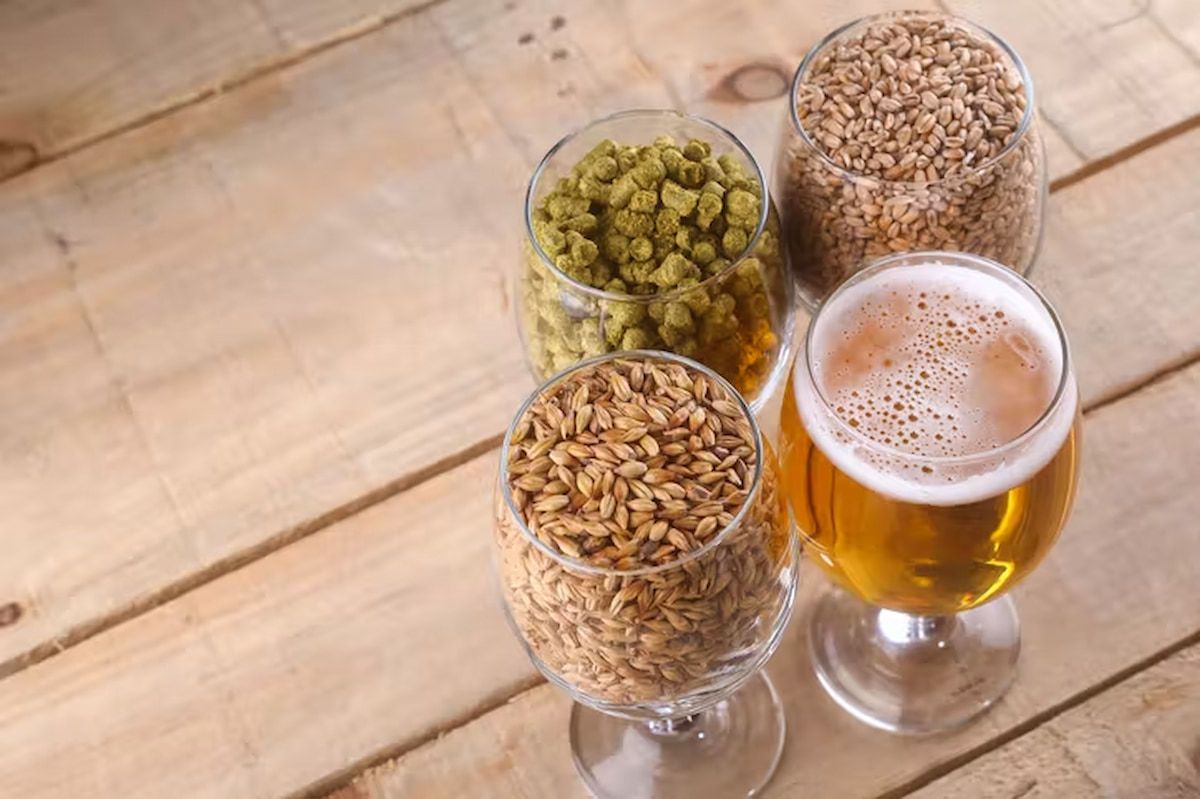Brewing a beer isn’t that difficult or complicated. All you’ll need is the right tools, sanitising products and of course, the right ingredients. Speaking of ingredients, practice shows that you can brew a beer even with four ingredients, only if they’re quality.
Water

The most obvious thing about beer is that 90 – 95% of it is water, which explains the fact that water is the main ingredient in making beer. However, not all types of water can be used for its creation. Even though it’s okay to use tap water, practice shows that chlorine in it can change the smell and taste of beer which is why you should use filtered or bottled water. If you want to use tap water, you can remove chlorine by adding a potassium metabisulfite tablet to the water. Let the water sit overnight, and then you can use it for the beer brewing process.
Besides this, you should also take into account the water’s hardness and pH level, because some beers might need water with lower pH and more hardness. And since the grains you add to the water can drastically change its pH, you should measure its pH prior the use with the help of testing strips or a pH meter. It’s said that the optimal pH for a mash should be in the range of 5.2 – 5.5 which is considered slightly acidic. In case the water is softer, the pH will be higher and in order to change this, you can add calcium to the water. In case the water is too hard, you can lower the pH levels by adding calcium bicarbonate.
Malt (Grains)

The grains or malt are the main ‘culprits’ for the beer’s flavour. Either way, prior to their use, grains should be malted by allowing them to sprout in a wet and warm place, so the complex carbohydrates could break down, allowing you to have an access to the sugars. Except for this basic malt (usually made of barley grains), some beer styles are in need of special malts that can obtain the beer with different flavours. For instance, caramel and crystal malts are well-known specialty malts where the crystal can give the beer roasted flavour (if they’re roasted longer), and caramel could add sweetness and caramel flavour.
Yeast

Yeast is one of the most essential and basic ingredients for beer making because it has the ability to convert sugars into alcohol. According to beer brewers, beer brewing yeast is a living organism that allows magic to happen. Some beer yeasts are considered more neutral because they won’t add any distinctive flavour to the beer, while others are more complex and can add a bit of flavour to it. Generally speaking, the crucial yet magical beer brewing yeast is divided into two categories ale yeast and lager yeast, giving the beer a different character.
Ale Yeast

This type of beer yeast is also known as top-fermenting yeast because it’s designed to float on top of the beer during the fermentation process. This beer yeast can ferment quite fast (about 5 days) and it’s designed to ferment at room temperature. The most interesting thing about this yeast is that it can add an interesting flavour to the beer making it ideal for the creation of ale beer, wheat beer, porters and stouts.
Lager Yeast
Unlike ale yeast, lager yeast is a bottom-fermenting yeast which ones it begins to eat, it goes straight to the bottom of the beer instead of on its top. Another great difference between ale and lager yeast is that the latter takes longer to ferment (a few weeks instead of a few days), and unlike ale yeast, lager yeast has to be kept at lower temperatures. This yeast is ideal for making lager beer of course, but also for pilsners, bocks and some malt liquors as well.
As you can see, both of these beer yeasts are different, so depending on the type of beer you want to make you can choose the right type of yeast. Usually, all beer brewing recipes come with specific instructions and ingredients, so you won’t make a mistake.
Hops

Hops are obtained from the climbing plant hop or to be more precise from its flower also known as a cone. Hops are an integral part of the beer-making process because it adds a tangy and bitter flavour to it while also adding herbal aromas. Given the fact that there are different types of hops, you have all the freedom in the world to choose hops according to your taste and needs. Generally speaking, hops can come in the form of hop pellets, hop plugs and loose-leaf. All of them are the same, just processed into a different form in order to meet different customers’ needs. What you need to know is that hops can be used in two ways, as a bittering hop for adding bitterness to the beer (added at the beginning of the boiling process), or as a finishing hop (added at the end of the boil) for aroma.

